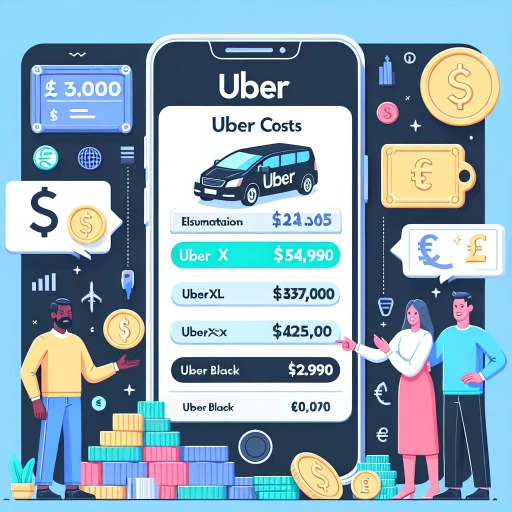How Much Does Uber Cost

Understanding The Basics of Uber Pricing
The Core Components of Uber's Fare
Uber's fare consists of several components that work together to determine the overall cost of a ride. These components include a base fare, time, and distance. The base fare is the cost of booking the ride itself and it varies depending on the type of Uber car booked - for instance, a more premium car like an Uber Black will have a higher base fare than a regular UberX. The time and distance components are calculated based on the length and duration of the ride - the farther and longer the ride, the higher these costs will be. Additionally, there may be surcharges during peak hours or in certain high-demand locations.
The Role of Dynamic Pricing
Uber employs a strategy known as dynamic pricing, which adjusts prices in real-time according to supply and demand. For instance, during busy periods when there are more passengers than available drivers, prices may increase - this is also known as surge pricing. The idea behind this approach is to attract more drivers to the area, thus balancing out the demand. Conversely, prices may drop during off-peak hours when there are more drivers than passengers. This means that the cost of the same Uber ride can fluctuate throughout the day, and it's something to factor in when factoring the overall cost of Uber.
Extra Charges and Fees
Aside from the base fare, distance, and time, Uber’s pricing model may also include certain additional charges and fees. For instance, there's a booking fee - a flat fee added to each ride to cover operational costs. In cities where the booking fee applies, it is charged per ride, regardless of the distance or time of travel. There are also cancellation fees if a passenger cancels a ride after a certain period, usually five minutes after making a booking. Other charges could include toll fees, airport surcharges, or a cleaning fee if a rider causes damage to the car.
How to Estimate Your Uber Fare
Beyond Uber’s Published Rates
Uber publishes rates for each city and Uber type, providing a base fare, a per-minute rate, and a per-mile rate. Knowing these rates can help to estimate the cost of a prospective ride. However, as we’ve established, these rates are just a starting point, and the final cost is likely to be influenced by various factors such as dynamic pricing and additional fees. Consequently, while Uber’s published rates can give an idea about the expense involved, they may not always give an accurate picture of the final cost.
Using Uber’s Fare Estimator
Uber's own fare estimator can be a more accurate tool for predicting how much a ride will cost. It calculates the expected cost of a ride based on current demand, traffic conditions, and the planned route. It calculates all the expected costs - including base fare, distance, time, and even estimated surge pricing if applicable. However, it’s worth noting that even this is an estimate and the actual fare may be different, especially if the trip happens at a completely different time or conditions change unexpectedly.
Third-Party Fare Calculators
There are also several third-party apps and websites that offer to calculate expected Uber fees. Many of these tools use data provided by Uber but may also factor in data from other sources like historic pricing trends, user reports, and more. While these tools can be useful, it's important to remember that they are also estimates and that the only real way to get an accurate cost for an Uber ride is to request the ride itself in the Uber app.
Comparing Uber with Other Transportation Options
Uber vs. Traditional Taxis
One of the most common points of comparison for Uber costs is traditional taxi services. Uber tends to be cheaper than taxis for shorter distances and during non-peak times. However, during peak times and longer distances, Uber's surge pricing can make it more expensive. However, it's also worth noting that Uber's pricing is usually more predictable and transparent than taxi pricing, with passengers able to see the estimated fare before booking the ride.
Public Transportation
Public transportation is generally the cheapest option, especially for solo travelers or daily commuters. However, it often takes longer and can be less comfortable or convenient than door-to-door transportation like Uber. So while Uber will typically be more expensive than taking a bus or train, the added convenience and speed can often make it worth the cost, especially for groups of people or for those in a hurry.
Ride-Share Alternatives
There are several ride-sharing competitors to Uber, such as Lyft, that generally operate under a similar pricing scheme. Comparing costs between these services can be useful, especially during peak times when one service may have higher surge pricing than another. Tools like Fare Estimate can compare costs between Uber, Lyft, and other services to help find the cheapest option.